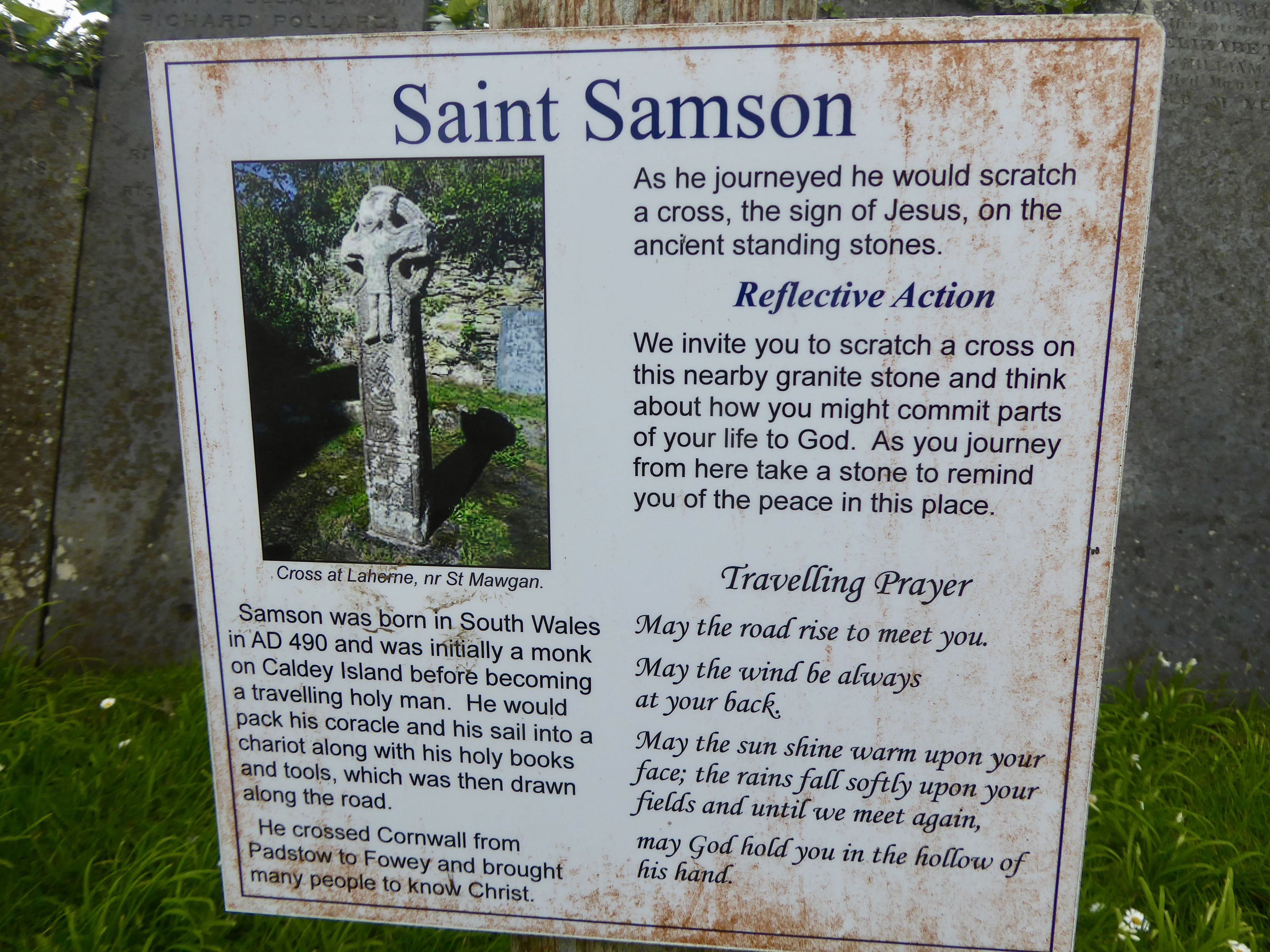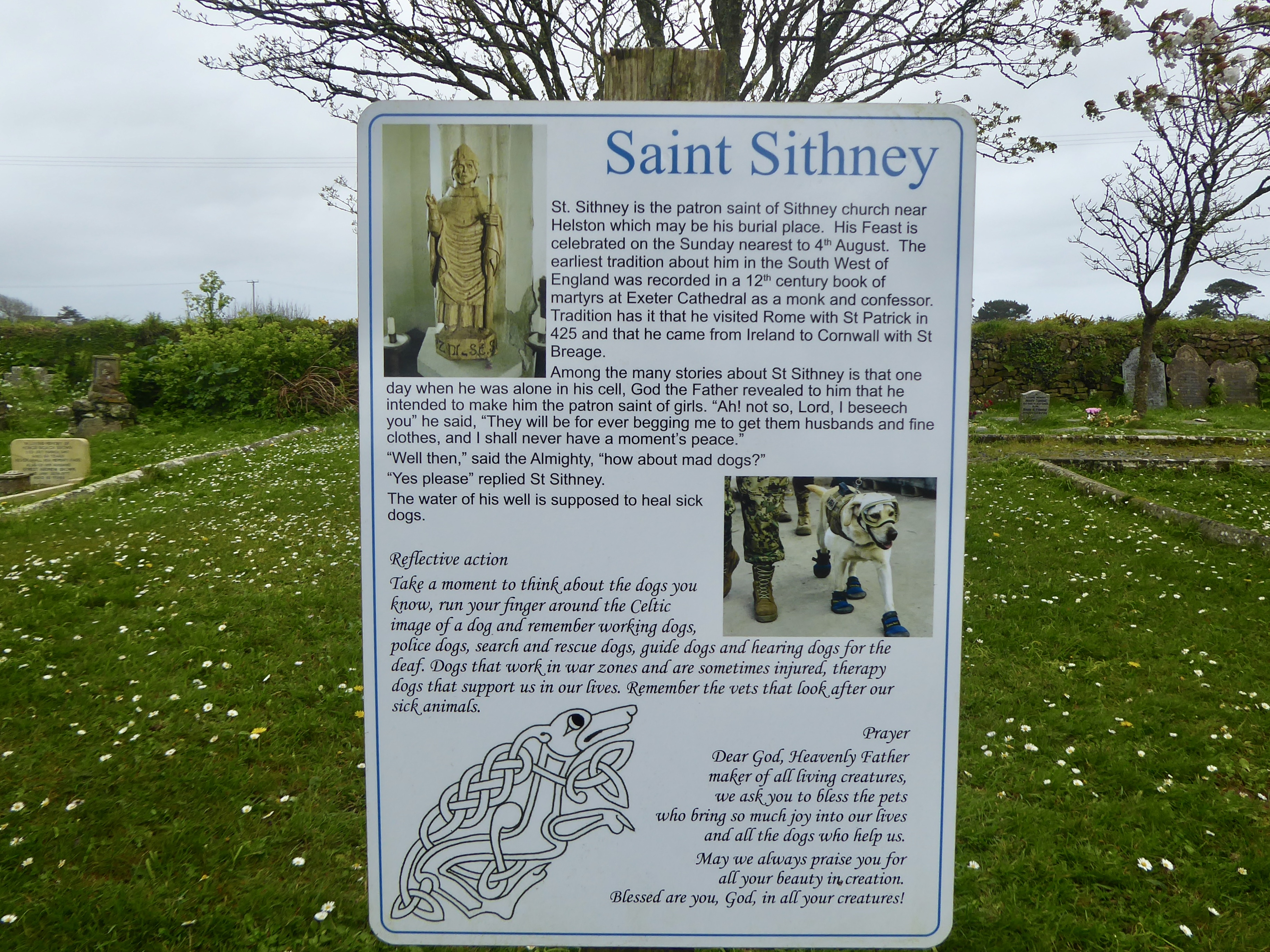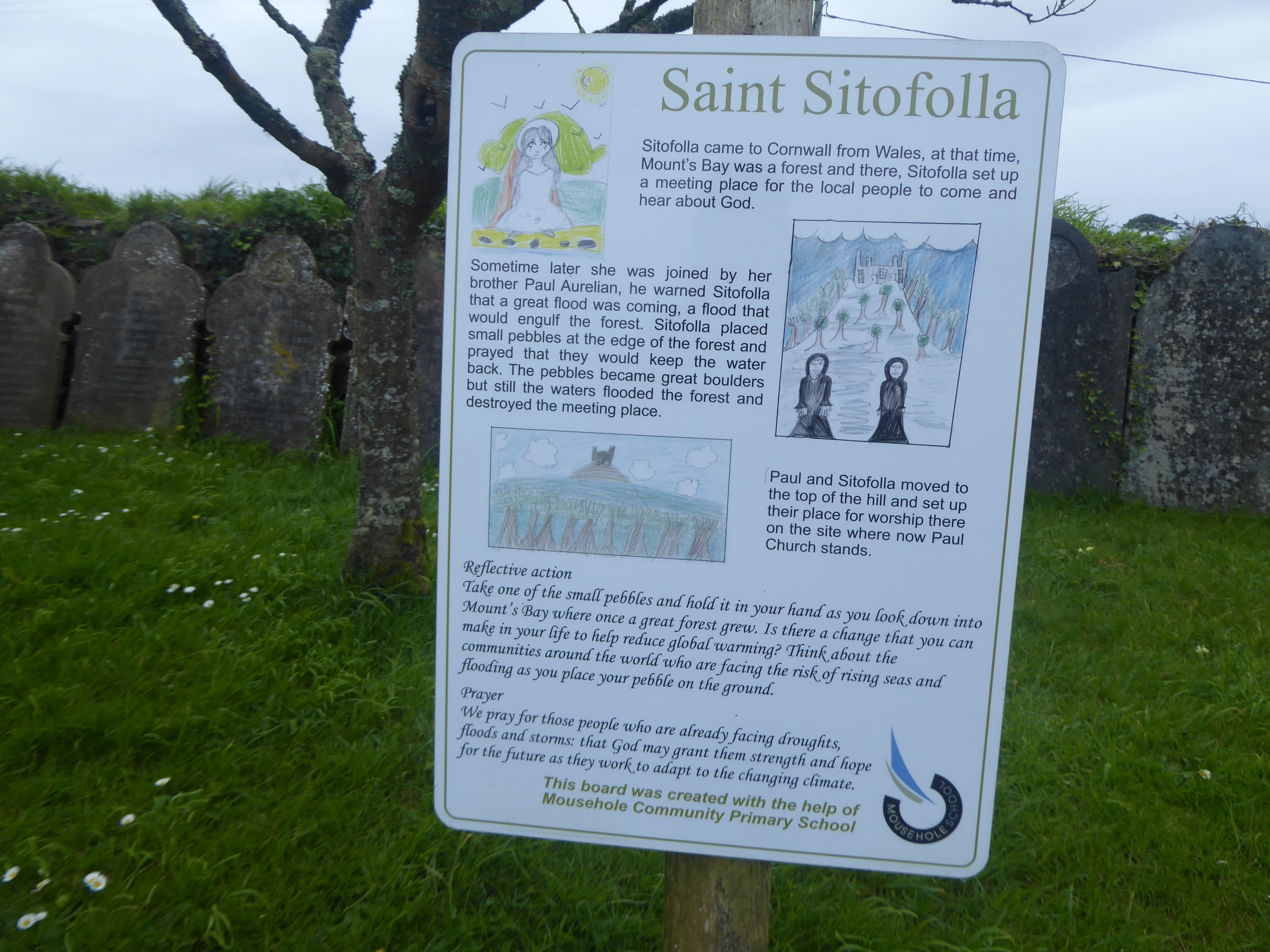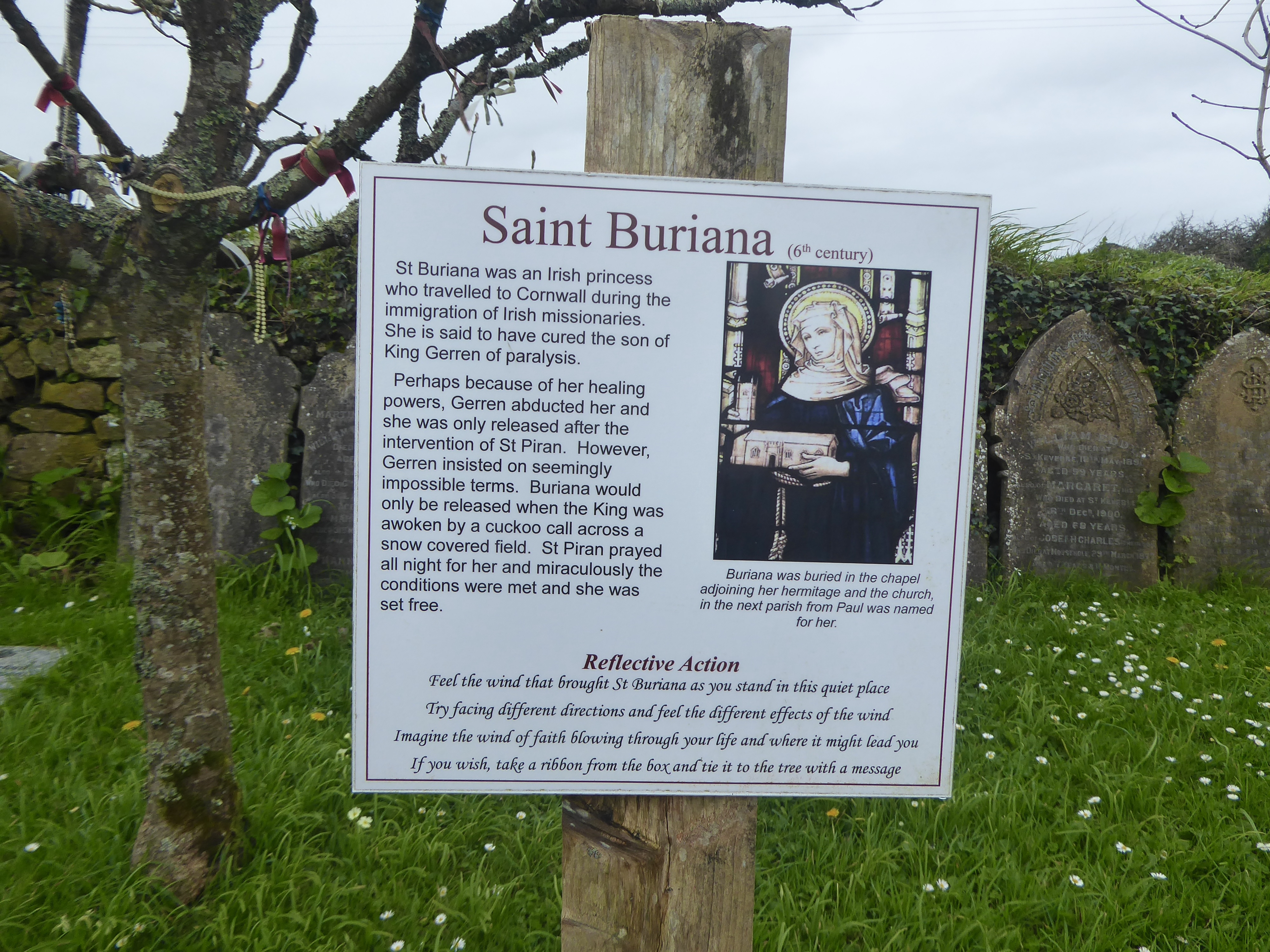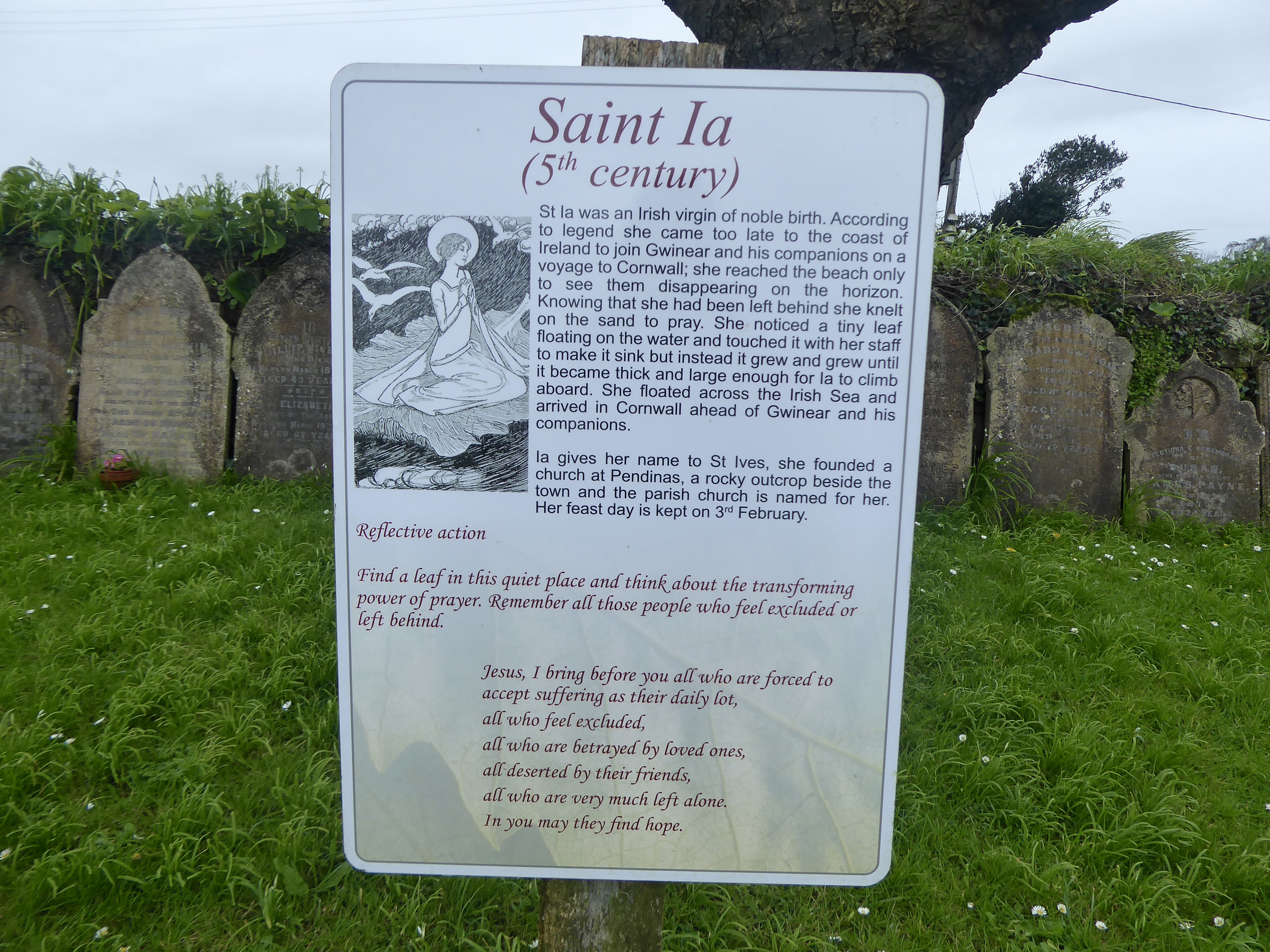
Paul Prayer Garden, Cornwall
Paul, a hamlet near Penzance in Cornwall is named after Paul Aurelian, or Pol de Leon. A plaque in Paul church says he was alive circa AD 480-575. It goes on to say he was 'one of nine brothers and three sisters. Paul Aurelian was the child of Perphirius, a British chieftan who lived in South Wales. While he was still very young, Paul began his sacred studies at Llantwit Major under the tutleage of St Illtud, so was a contemporary of both Samson and Gildas. Paul was ordained at age 16, and he lived for a short time as a hermit. Impressed by Paul's sanctity, King Marc of Cornwall (St Crida's father) summoned Paul to court and offered him the bishopric of Cornwall. Paul refused the king's offer however, and left court to stay with his sister Sitofolla, who had established a convent near Penzance. While living with his sister, Paul established a church near Penzance and it is said that he called people to church with his bell.
A few years later, he set sail for Brittany. There he established two monasteries: one at Lampol and one at Ocismor, which is now known as St Pol de Leon. St Paul Aurelia died on the island of Batz when we was more than one hundred years old. His body and his bell are house in the Cathedral at St Pol do Leon in Brittany.
We called in at the church in Paul which is probably on the original site of his prayer community. However, we didn't linger long there but went across the road to the Celtic prayer garden which was established by a former vicar. This was a lovely and inspiring space, despite both our visits being on stormy days. Around a grassy area there are stations with information about various Celtic Christian saints particularly associated with Cornwall. There's a little history, a reflection and a prayer. We found these very inspiring and the whole garden a wonderful place to pray and worship. It was a very thin place and on a sunny day would have spectacular views across to St Michael's Mount and Mounts Bay. Our visits were sadly shrouded in stormy clouds and lowering skies. Despite this we made two visits because the first was so special. It was evident people had prayed on the land and honoured the heritage of these Christians who had laid such a solid foundation in Cornwall. I can highly recommend a visit.
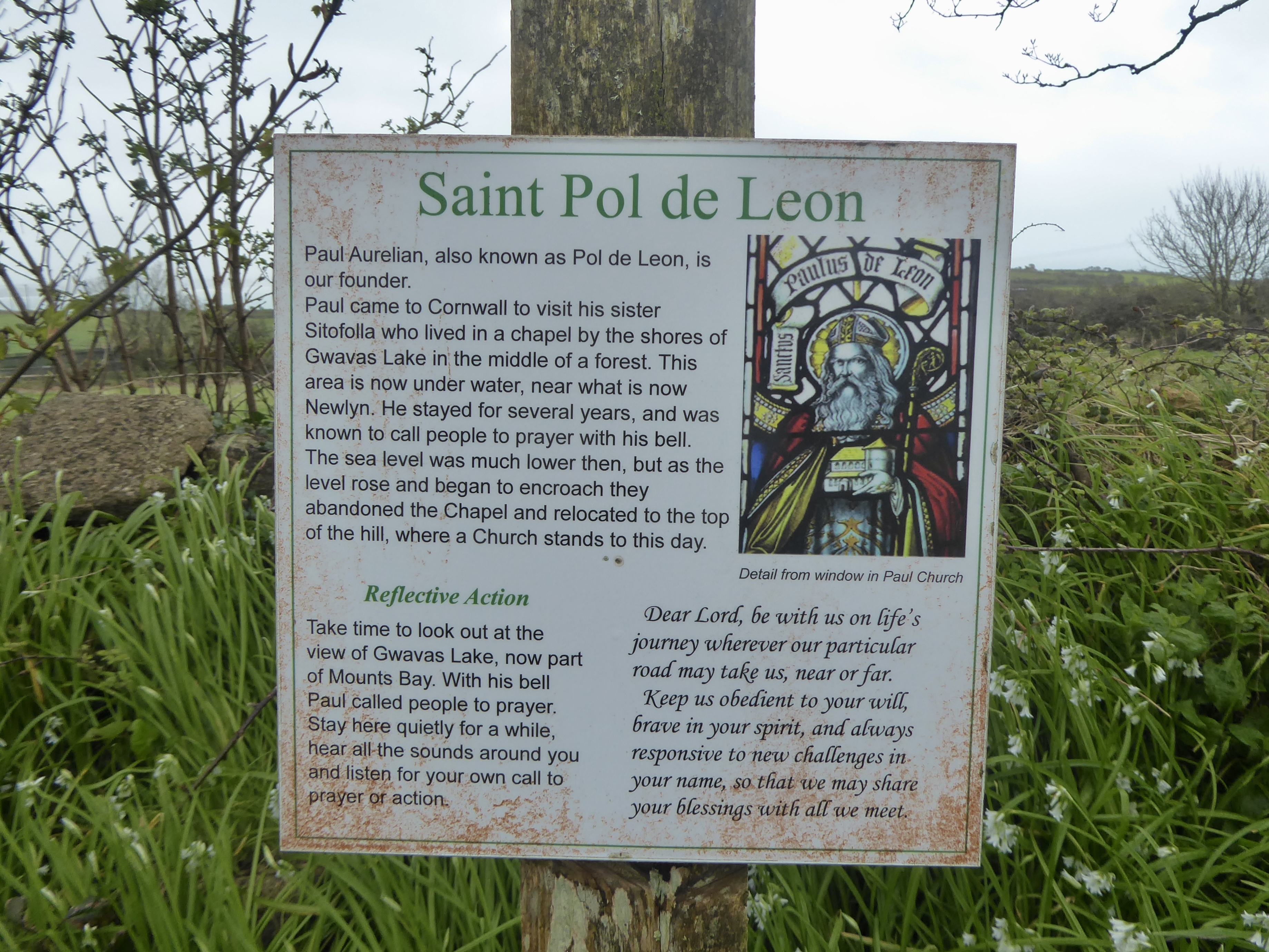

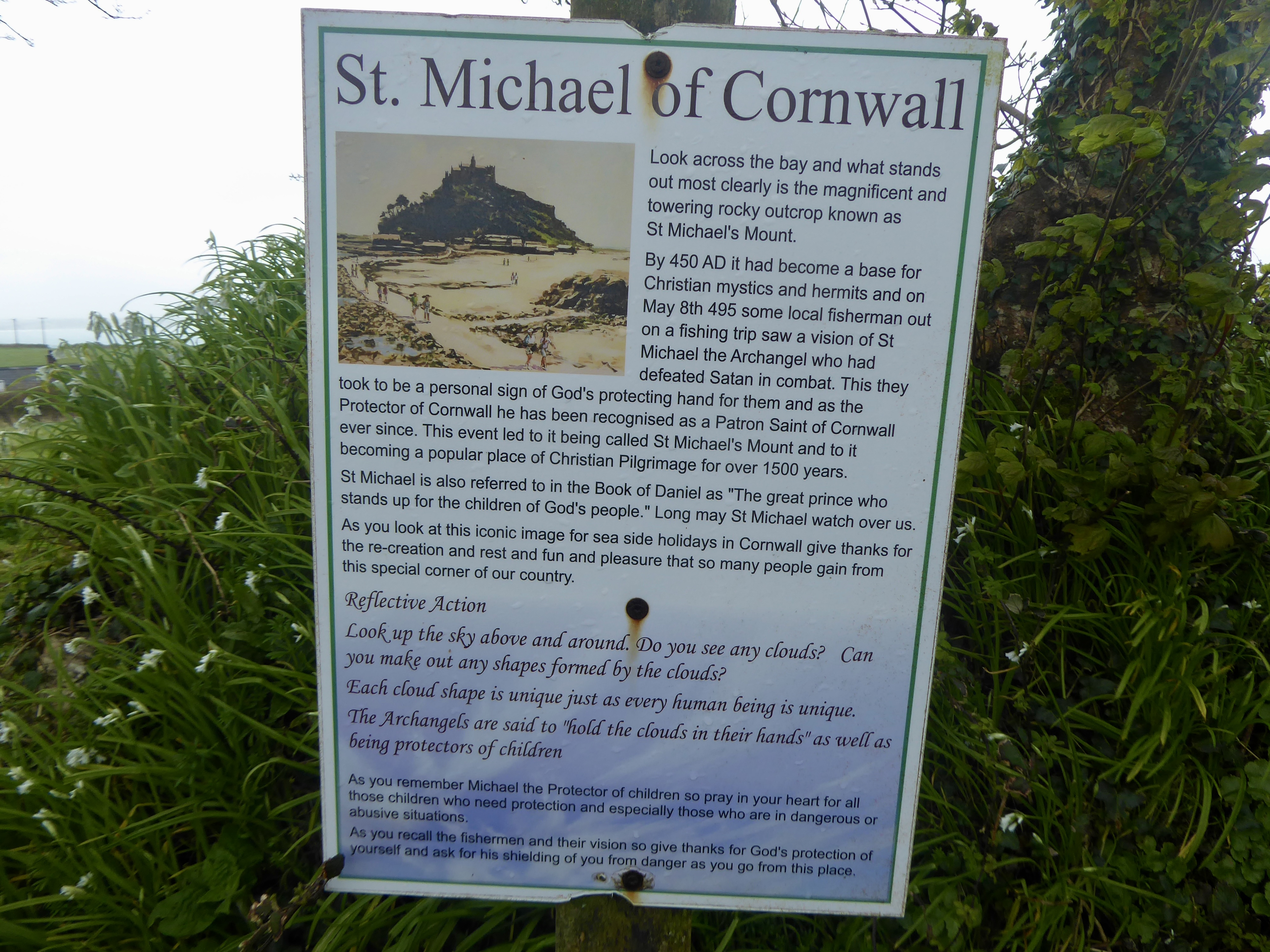
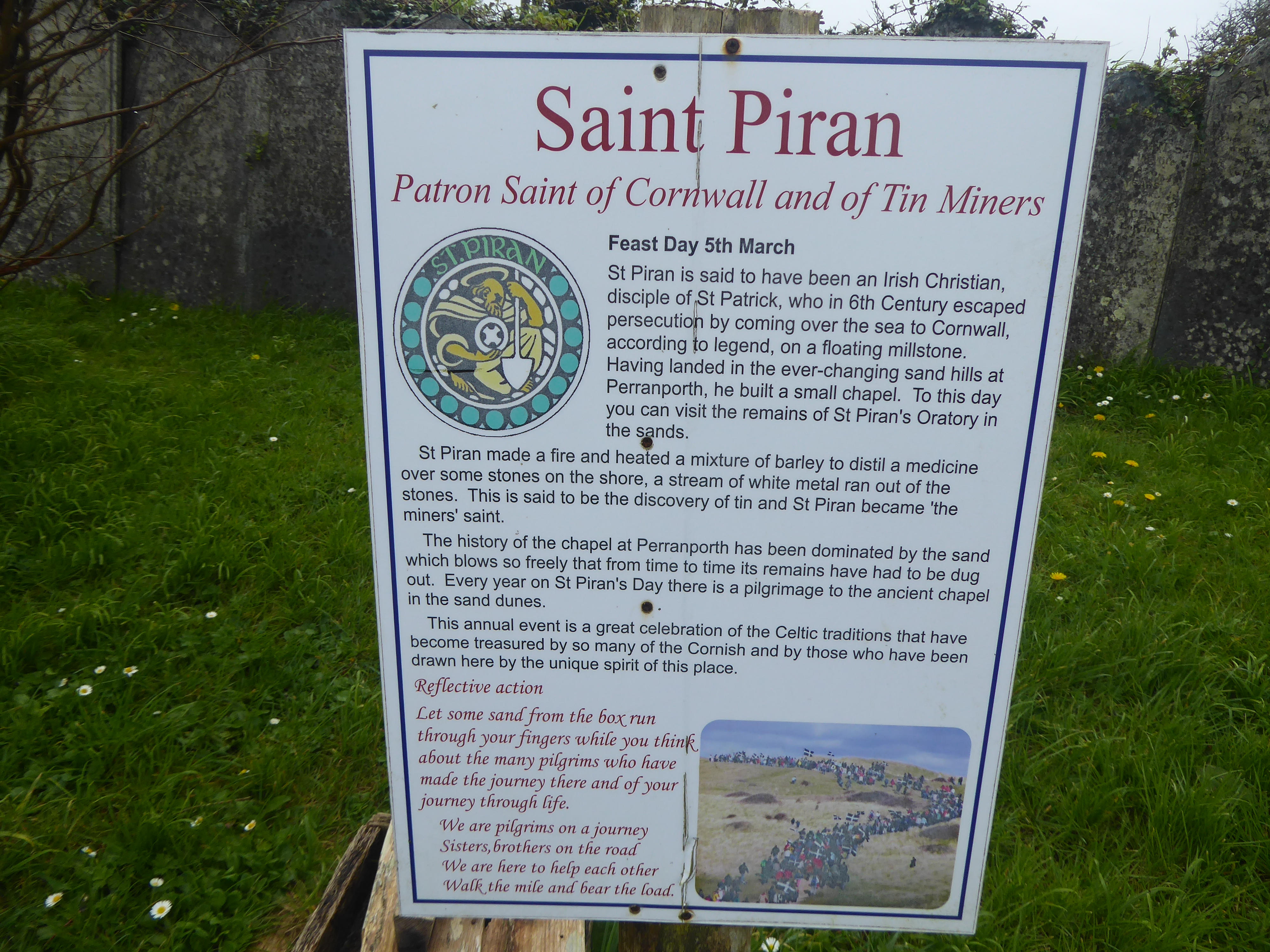
There is an ancient crosshead on the churchyard wall but I couldn't find any information about it.
